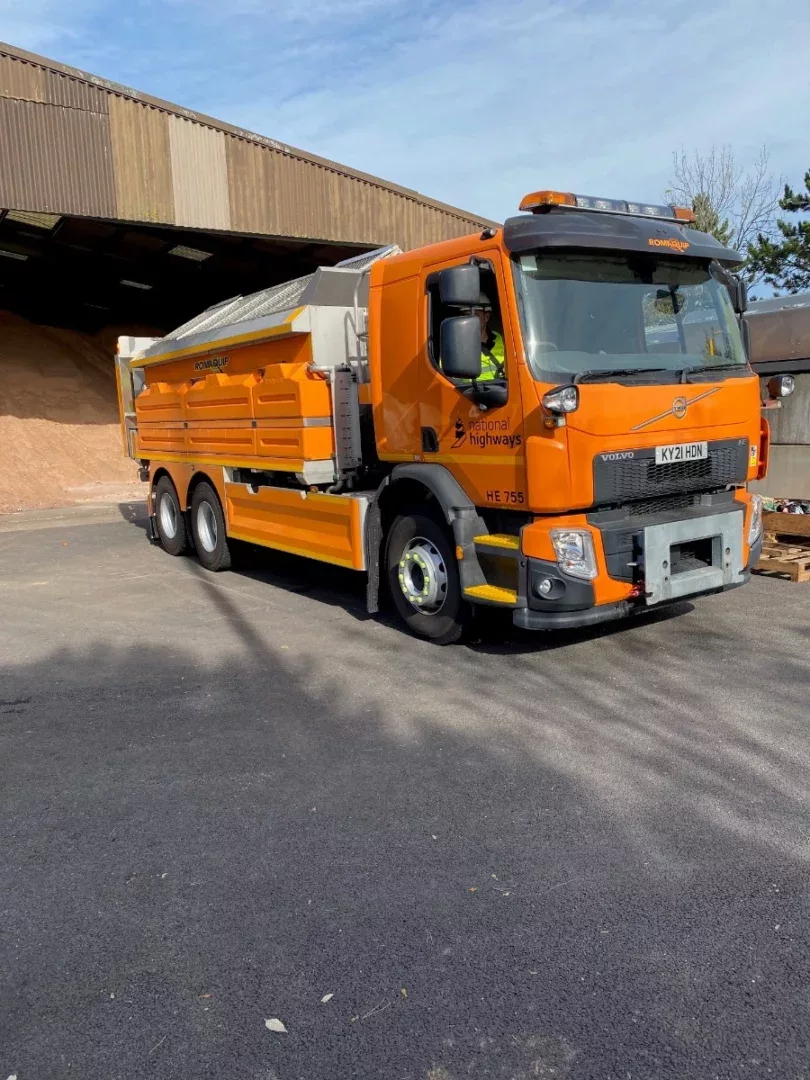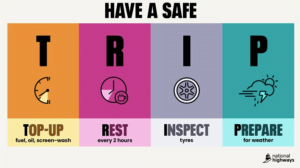National Highways is reminding motorists give gritting vehicles time and space while they are out on the network.
The message comes with more cold weather and snow forecast this week by the Met Office, and where conditions determine gritting vehicles need to go out, they will spread salt where needed.
It also follows the recent Know the Zones campaign launched by National Highways to help road users understand the blind spots HGV drivers face from passing and overtaking vehicles.
National Highways can call upon around 530 gritters in extreme weather conditions.
Darren Clark, Severe Weather Resilience Manager at National Highways, said: “As our gritting teams go out to spread salt on the roads, our message is simple to all road users: ‘Please be patient and give us the time and space to do what we need to do to keep you safe.
“If you are going to pass us, please do so courteously, pass us safely and legally, or even better, if you are able to stay back, you will actually help the salt on the road activate even more quickly by crushing and breaking it into the road surface which benefits everyone.
“It’s worth remembering too, we are not gritting all the time. Some of our fleet may come off at particular junctions or return to depots while other vehicles take over, lowering any inconvenience to motorists. We are once again totally committed to working around the clock on these seasonal operations to keep all road users safe and thank everyone in advance for their patience and understanding.”
Mr Clark continued: “Not all roads will need treating on any given day. Gritters may need to go out in some regions if road temperatures are expected to fall below +1 degrees C, and if there is a risk of ice forming, but not in other areas if conditions are not as cold.
“National Highways is committed to treating every road which needs to be treated – whenever it is needed. We are armed with the latest technology, forecasting intelligence and years of experience to help us make informed decisions about where and when we need to spread salt to help keep road users safe in even the most adverse weather conditions.”
RAC Breakdown spokesperson Rod Dennis added: “With a sudden switch to considerably colder conditions, the potential for vehicle breakdowns increases significantly. If a car struggles to start, the battery either needs charging – by taking it for at least a 30-minute drive – or is a sign it’s about to fail and will need replacing. It’s vital tyres have plenty of tread as good grip is essential in cold conditions. Any tyres that are well-worn and approaching the legal tread limit should be changed as a matter of urgency. Drivers should also ensure their tyres are free of damage and are inflated to the correct pressures. We also strongly recommend drivers check their cars’ oil and coolant levels and top up if necessary.”
National Highways recently completed the assembly of its new £44m two-year investment in a fleet of 252 Romaquip / Volvo gritter vehicles, some of which carried out winter operations last year, and all of which are involved in salt spreading this season. T
Vehicles in our winter gritting fleet can carry up to around 12,000 kg of salt, or 8,400 kg of salt and 3,600 litres of brine at any one time. National Highways says the Romaquip / Volvo gritting vehicles can spread up to 50mph, encouraging traffic to keep moving more effectively on the roads even when they are being treated. When not treating they can travel up to 56mph.
(Picture – National Highways)





















